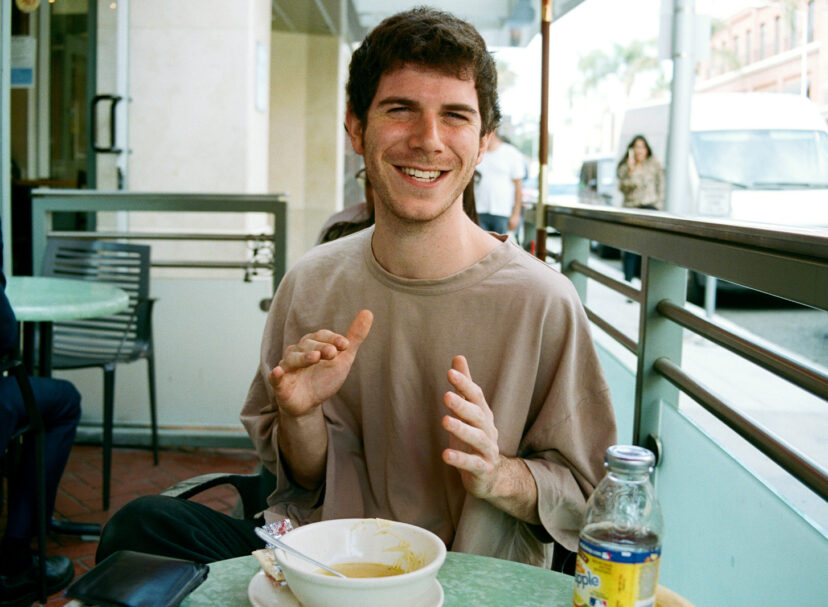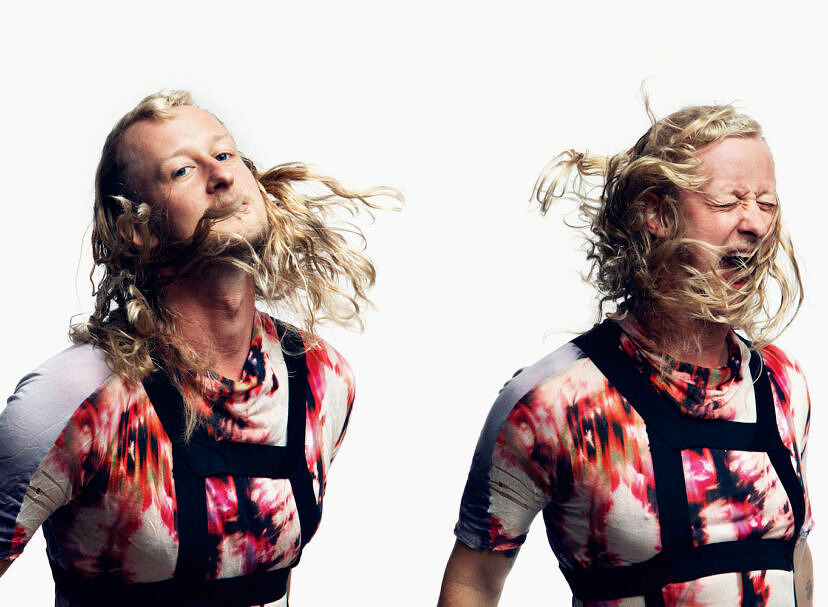Interview: Alec Coiro
Photo: Kat Slootsky
Our interview with Brian Chase turned out to be more than a discussion about the new album; it was a chance seriously investigate in depth what drone music is and how and why it works. Chase as both a practitioner of the genre and as the proprietor of Chaikin records has given the matter the sort of thought that might be best described as academic in its thoroughness. But as deep as he goes into drone music, it’s also important to realize that one of the defining aspects of Chaikin records is its diversity of interests. Chase discusses this as well as how his drumming with the Yeah Yeah Yeahs fits in with this diversity. And, as with previous Drums and Drones releases, the text that comes with the album is significant both in content and scope, so what Chase has to say to us here should is only a taste of the larger picture.

When last we spoke, you turned me on to a quote by La Monte Young that was very useful for understanding drone music. According to Young, “Once [a] Drone-State-of-Mind has been established, the mind should be able to go on very special explorations and in new direction…” In the Drums and Drones compositions, how conscious are you of creating this “Drone State of Mind,” and to what extent do you think the composer controls the direction the listeners mind will go in and the special explorations they will embark on?
With Drums and Drones, I am very conscious in establishing a “Drone State of Mind,” to use La Monte’s term. As the composer, I provide the music to function as an ‘environment’ for the listener. As with much drone music, it is up to the listener to provide his or her own experience relative to the specifics of the drone environment.
The beauty of drone music comes from the capacity to be absorbed by its vibrations. Drone music’s stillness provides for an opportunity to dive deeper into sonic subtleties and into the subjective process of listening. Sound vibrations are physical, they are real and not metaphoric.
An important component here, for Drums and Drones as with La Monte’s music, is structure. It is crucial that these vibrations be precisely ‘in tune’ according to the physics of Nature. This establishes a requisite sonic and physical stability that is “supportive” (as La Monte might say) for the mind to go on its “explorations.”
What is the mission that drives Chaikin Records?
Sometimes you just have to take matters into your own hands and do it yourself. Sometimes it’s bigger than you expect. Sometimes that’s just how it is or not at all. What did Yoda say? “Do or do not. There is no try.” Something like that. Hahaha.
The musical inspiration for Chaikin Records springs from my involvement with both rock band Yeah Yeah Yeahs and NYC’s experimental music community. With the label I’m not interested in representing singularly different genres but rather an attitude of freedom and diversity, one in which there is no such thing as difference and it’s about the music. This first release on Chaikin Records will be entitled Drums and Drones: Decade, and it’s a 144 page book and triple album.
It sounds like the text for Drums and Drones went significantly beyond the average album liner notes. Who contributed to the writing? Can you tell us a little about the process of creating the text and why it was important to you to work so thoroughly on this aspect of the album?
The first Drums and Drones release which came out in 2013 featured extensive liner notes detailing the album’s backstory, technical methods, and compositional processes, as well as personal reflections on artistic concepts and inspirations. This apparently started a trend. For the two subsequent albums, recorded in 2015 and 2017, I did the same – writing extensive notes outlining each’s creative story. Those albums were never released until now.
Drums and Drones has proven to be a project which lends itself well to multimedia aspects. This includes a visual component as well as textual. In thinking on the reason why these mediums are complementary, what stands out is the significance of ‘process.’ When the ‘process’ of making art functions as a key component of the ‘art’ itself, then this ‘process’ can be applied and reinforced in other mediums. The book’s text finds meaning and insight in how the music came to be, in addition to the final product itself. Once tapped into this stream, it is a joy to keep discovering.
Following the chapters covering each of the three albums is an essay on Just Intonation, the microtonal tuning system that is the basis for Drums and Drones compositions. It is very elegant in its structure. I got hooked by Just Intonation after working at the Dream House, the ongoing sound and light installation by La Monte Young and Marian Zazeela, in TriBeCa. I got turned on to the work of La Monte and Marian by guitarist Jon Catler, one of La Monte’s long time disciples.


The beauty of drone music comes from the capacity to be absorbed by its vibrations. Drone music’s stillness provides for an opportunity to dive deeper into sonic subtleties and into the subjective process of listening.


Can you tell us a little about the video artists Ursula Scherrer and Erik Zajaceskowski and how they contributed to the project?
Ursula was born in Switzerland and moved to NYC in the late ‘80s. Her video work is influenced by her diverse background in dance, photography, and multimedia performance art, as well as her extensive training as a yoga teacher. To me, she is an architect, painter, and healer.
Erik runs the Brooklyn art and music space Secret Project Robot, and Mighty Robot before that dating back to the late ’90s. I came across his live video work at the parties and events he was hosting and performing at, including those with early Brooklyn rock promoters Twisted Ones. His videos hit the ‘hypnotize’ button of the brain.
The video art of Ursula and Erik, particularly Ursula, have been an important collaborative aspect to Drums and Drones live performance. This first started in maybe 2010 or ’11. Both the sound and the live visuals compliment each other perfectly and establish a semi-immersive experience for the audience. From doing these live performances, and feeling how great the visuals worked with the music, the idea came to me to release the first Drums and Drones album with a DVD featuring videos for each track by Ursula and Erik. These videos are awesome, and stills are included as their own section within the upcoming book.
How distinct is your experience as the drummer for the Yeah Yeah Yeahs from your experience working with and creating experimental music? Are they two different worlds or is there overlap?
This is a very interesting topic, and one that does not have a single answer due to there being many perspectives. From my personal perspective, music is music and if I love the music and the people I’m playing with then that’s most important. I’m someone that has had a broad appreciation for many styles of music – as a teenager I’d go from listening to Elvis to Stravinsky to Miles Davis to James Brown to Slayer – and there was never an issue in seeing a unified vision in the diversity of ‘musical language.’ With that, Yeah Yeah Yeahs to me is still an avant-garde band in many ways, albeit one working in a rock-pop context. Our sound is unique and clever, and Karen’s vocal style and lyrics have a way of conveying emotion that is all her own.
The biggest difference between the world of YYYs and that of experimental music is mostly the non-music part – the media, the visibility, the attention. I watched one of the new Star Wars movies on a plane recently and it came to mind that Mark Hamill will always share a dual identity with Luke Skywalker. This character of Luke is the result of the ‘art’ and the wider public will know the character before the real person. Now, YYYs is nowhere near the level of Luke Skywalker, but there is the sense there that YYYs music and identity take on a significance that is out of our control. This is the mythologizing procedure that happens when dealing with the wider public. In the experimental music scene, this is not so much the case. Often times there’s not a backstage at the venue, ha! One aspect which can be good about mythologizing – though there is some distortion – is that it can help do justice to the actual power of the art. Most artists, I feel, regard his/her art as ‘bigger than themselves,’ that is to say, the art taps into and expresses attributes that are deep and universal. By the artwork then having a life of its own there is the function of it growing and expanding. What remains is a lasting impression determined by integrity and quality.



